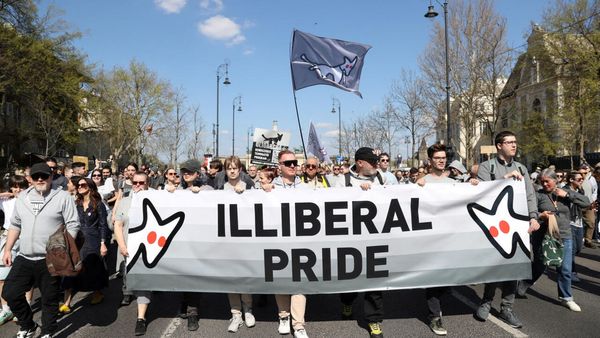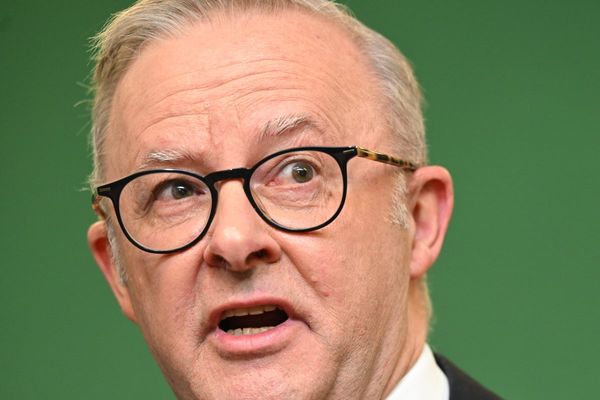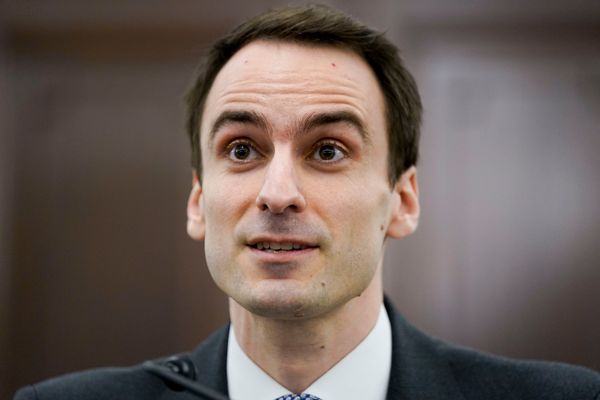
Despite disavowing Project 2025 on the campaign trail and the people involved with creating it, Donald Trump has now tapped numerous people tied to the project for key roles in his administration as he prepares to advance some of its main goals.
He acknowledged in December that he agreed with some parts of the project, but didn’t say which, claiming he didn’t read it and didn’t have any part in it. “They have some things that are very conservative and very good. They have other things that I don’t like,” he told Time magazine. He also said he thought it was “inappropriate” that the project was released ahead of the election and could have derailed his win because “they had some pretty ridiculous things in there”.
The project is an effort by the Heritage Foundation, a prominent rightwing thinktank, and more than 100 other conservative organizations. It constitutes a 900-plus page manifesto that details how an incoming president should dismantle features of the government it believes conflict with conservative ideology. The people behind it also put together a database of thousands of potential employees who could staff the next Trump administration and a training program that taught these staffers how to work in the federal government.
The first steps of the plan involve amassing more power for the top executive, driving out dissenting voices and stretching the law to favor Trump. Those plans are expected to begin immediately and Trump will also use the justice department to go after his enemies soon after taking office.
That power shift enables the other elements of the project, which calls for policies that overhaul immigration, restrict abortion access, remove LGTBQ+ and diversity protections, end climate work, alter employment practices and ramp up deregulation.
“A lot of it’s going to be Trump daring Congress and the courts to stop him,” said Christopher Bosso, a professor of public policy and politics at Northeastern University.
The extensive planning by the Heritage Foundation and other conservative groups for a second Trump administration stands in contrast to Trump’s first win, when the president wasn’t as ready to quickly install his loyalists and launch his policies. This time, the conservative movement is poised to pounce immediately on a pent-up demand of rightwing dreams – and so is Trump.
“Project 2025 said the quiet parts out loud,” said Ben Olinsky, senior vice-president of structural reform and governance at the Center for American Progress, a left-leaning thinktank.
The project didn’t just say what it wanted to do, but how it wanted to achieve its goals, he said. “It lays out a path to either ignore or flout the law, or to bend the law through its will, and change how things work so that they can get all of these things done. And that’s what makes it even scarier.”
What Trump’s appointments signal
Trump nominated Russell Vought, an architect of the project and the founder of the Center for Renewing America, as the director of the US office of management and budget, the same role Vought had in Trump’s first administration.
Vought wrote a chapter for the project that talks about how the president can consolidate power and use the budget process to make agencies fall in line with his agenda. Both he and Trump rail against the so-called “deep state” and federal civil servants who staff much of the government.
That goal is a major part of Project 2025 and a top priority for Trump: making more federal jobs political appointments. Only about 4,000 federal employees are now political appointees. The rest of the more than 2 million civil servants hold their jobs regardless of party control and develop expertise that keeps critical services functioning. “Schedule F” would classify far more roles as policy-related – about 50,000 more – giving Trump a huge amount of power to roll out his agenda.
Vought attacked the civil service as overly liberal and unaccountable to the people, saying that “a President today assumes office to find a sprawling federal bureaucracy that all too often is carrying out its own policy plans and preferences — or, worse yet, the policy plans and preferences of a radical, supposedly ‘woke’ faction of the country”.
He has also advocated for using a process called “impoundment” to withhold funds from agencies or programs even if Congress has appropriated those funds, a practice that would probably draw legal scrutiny but would give Trump more direct budget power to defund things he doesn’t like.
“Trump has appointed somebody who he knows is going to carry out Project 2025,” Bosso said of Vought.
Other appointees have direct ties to the project as well. Peter Navarro, who Trump tapped as a senior counselor on trade and manufacturing, authored a section of the project that makes a case for trade restrictions, part of a dueling chapter on trade plans that includes both free and fair trade positions. By choosing Navarro, Trump doubled down on his plans to use tariffs and trade to get other countries to go along with his ideas.
“The stark lesson of this chapter is that America gets fleeced every day in the global marketplace,” Navarro wrote in the project.
The choice speaks to Trump’s “general antipathy to free trade, which goes back to his first time around in office”, and his desire to use “trade as a weapon, even if it has rebound effects on the US economy”, Bosso said.
The first dominoes
Expanding political appointments will be an early step for the Trump administration, a key way that will allow him to carry out the rest of his plans.
“The ones to watch are the second tier, the ones right below the cabinet-grade people,” Bosso said. “And if you get a bunch of folks who are competent, who know what they’re doing, and they’re ready to go, and they believe in the project, that’s what’s going to be important.”
Trump will also seek to end or undermine the independence of independent agencies. With the FCC, for example, he could try to bully them to go after broadcasters’ licenses because he doesn’t like their coverage, Olinsky said. Brendan Carr, Trump’s nominee to chair the Federal Communications Commission, wrote the Project 2025 chapter suggesting ways to change the FCC, including by reining in big tech.
“I think they plan to run a hardball effort that, I would argue, just ignores or breaks the law, and then forces others to challenge them in the courts,” Olinsky said.
While the justice department isn’t an independent agency, it has in effect been able to independently undertake investigations – which Trump could stop. Kevin Roberts, the Heritage Foundation president, has said “we just disagree wholly that the Department of Justice is independent of the president or the executive branch”. Project 2025 suggests stocking the department with far more political appointees because it has been “captured by an unaccountable bureaucratic managerial class and radical Left ideologues”.
Immigration is a day-one priority for Trump, who has vowed a campaign of mass deportation and a raft of policy changes to block people from entering the country. Project 2025 doesn’t detail how a mass deportation would work, but it does call for stopping migration, halting waitlists for visa programs, ending some visas altogether, raiding worksites and going after cities and states that don’t play along.
Presidents have a lot of latitude on immigration policy, Olinsky said. “We should expect that Trump will exercise every lever at his disposal to limit legal immigration, to deport folks who have been here for years and to try to end birthright citizenship,” he said.
Culture-war policy areas, like protections for LGBTQ+ people and efforts to improve diversity, will probably be reversed quickly once Trump takes office. Project 2025 makes suggestions in nearly every chapter of programs to get rid of these goals, some of which can be done away with by the internal directives.
Deregulating industry is another key feature of the project where Trump aligns. Project 2025 includes a raft of deregulation plans and ways government functions can be privatized. This includes minimizing overtime pay for companies, making it harder to regulate toxic chemicals and weakening unions.
“The real point is to neuter the federal government in areas of the regulatory state, environmental regulations, health regulations – the stuff that people don’t think they want until they want it,” Bosso said.
In some areas, it’s not clear if Trump will follow what Project 2025 wants because his own comments conflict with their proposals. On abortion, for instance, Trump has largely sidestepped the debate over further restrictions after Roe fell, while the project provides a host of ways to curtail access to abortion medications, add regulatory hoops and increase monitoring of abortion.
“Notwithstanding the comments that Trump made when it was politically helpful for him to make them, I do think that we’re going to see attacks on abortion and reproductive care in this administration,” Olinsky said.







